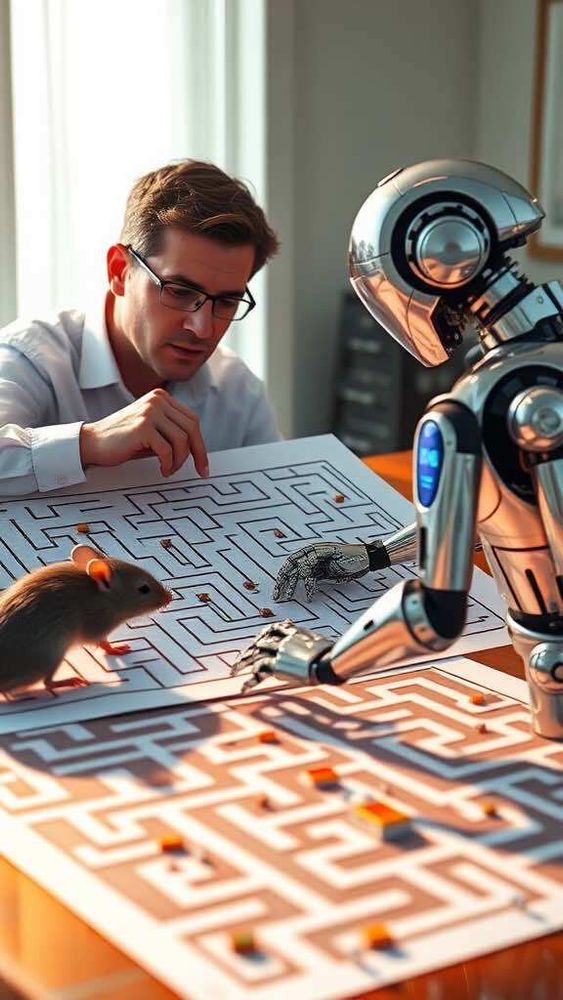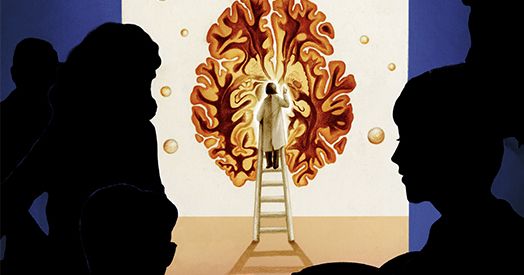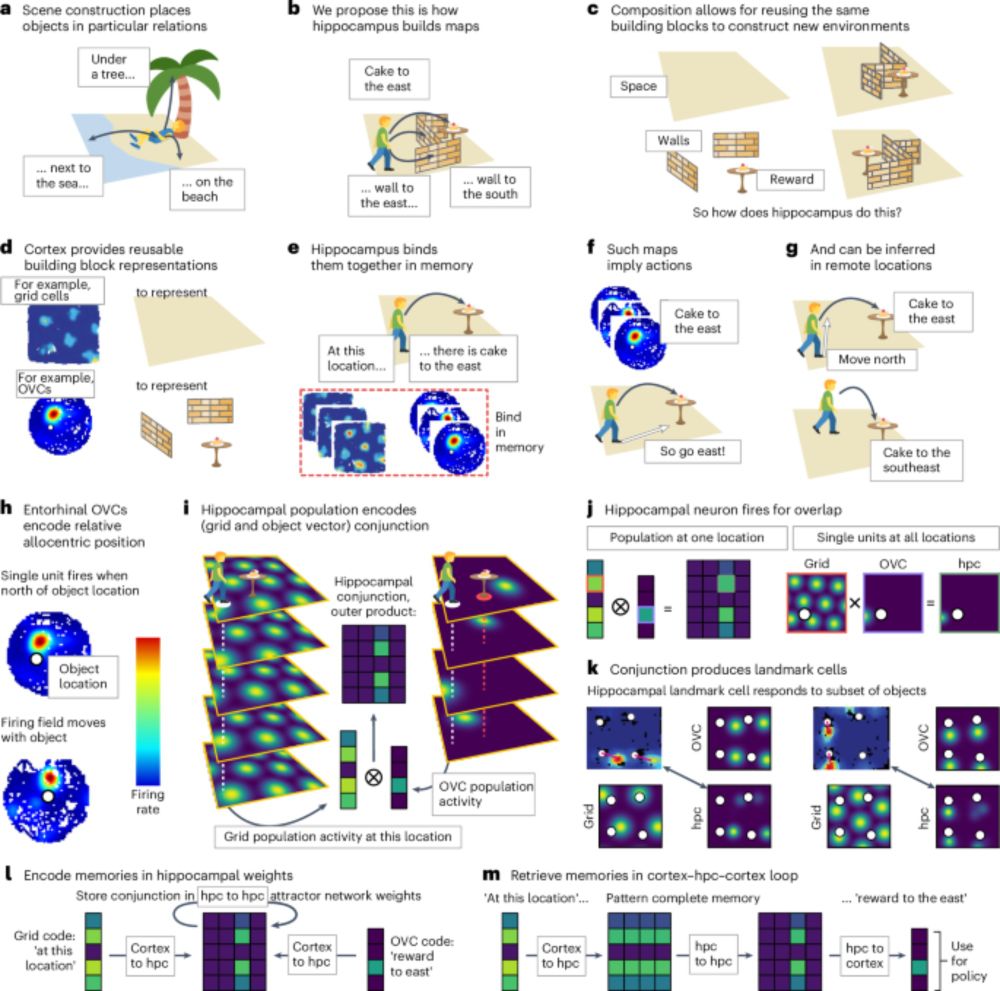Enhancing memory using cross-species closed-loop Targeted Memory Reactivation | mrcbndu
** We have up to TWO funded PhD positions available in our lab!! Apply below to find new ways to enhance memory👇 Pls retweet **
Deadline: 2nd December
1. Cross-species closed-loopTMR: tinyurl.com/bddu4tp6
2. TUS and TMR in humans:
tinyurl.com/jjws5ctj
Happy to chat to interested applicants.
06.10.2025 11:51 — 👍 47 🔁 42 💬 1 📌 0

Image shows the first two printed pages of the paper “A forkhead-domain gene is mutated in a severe speech and language disorder” by Cecilia Lai and colleagues, published in Nature in 2001 (volume 413, pages 519-523). The abstract reads as follows:
Individuals affected with developmental disorders of speech and language have substantial difficulty acquiring expressive and/or receptive language in the absence of any profound sensory or neurological impairment and despite adequate intelligence and opportunity. Although studies of twins consistently indicate that a significant genetic component is involved, most families segregating speech and language deficits show complex patterns of inheritance, and a gene that predisposes individuals to such disorders has not been identified. We have studied a unique three-generation pedigree, KE, in which a severe speech and language disorder is transmitted as an autosomal-dominant monogenic trait. Our previous work mapped the locus responsible, SPCH1, to a 5.6-cM interval of region 7q31 on chromosome 7. We also identified an unrelated individual, CS, in whom speech and language impairment is associated with a chromosomal translocation involving the SPCH1 interval. Here we show that the gene FOXP2, which encodes a putative transcription factor containing a polyglutamine tract and a forkhead DNA-binding domain, is directly disrupted by the translocation breakpoint in CS. In addition, we identify a point mutation in affected members of the KE family that alters an invariant amino-acid residue in the forkhead domain. Our findings suggest that FOXP2 is involved in the developmental process that culminates in speech and language.
Twenty-four years ago today, our paper “A forkhead-domain gene is mutated in a severe speech and language disorder” was published: www.nature.com/articles/350....
A personal thread about the ups & downs of the journey we took to get to that point....1/n
🗣️🧬🧪
04.10.2025 13:32 — 👍 84 🔁 35 💬 4 📌 6

I’m pleased to share our new paper, “Hippocampal ripple diversity organizes neuronal reactivation dynamics in the offline brain”, out in @cp-neuron.bsky.social !
With @vitorlds.bsky.social and David Dupret, we show that diversity in ripple current profiles shapes reactivation dynamics
02.10.2025 15:46 — 👍 65 🔁 27 💬 4 📌 1
Planning with attractors in PFC!
24.09.2025 13:16 — 👍 4 🔁 0 💬 0 📌 0
I’m super excited to finally put my recent work with @behrenstimb.bsky.social on bioRxiv, where we develop a new mechanistic theory of how PFC structures adaptive behaviour using attractor dynamics in space and time!
www.biorxiv.org/content/10.1...
24.09.2025 09:52 — 👍 207 🔁 85 💬 9 📌 9
🚨We believe this is a major step forward in how we study hippocampus function in healthy humans.
Using novel behavioral tasks, fMRI, RL & RNN modeling, and transcranial ultrasound stimulation (TUS), we demonstrate the causal role of hippocampus in relational structure learning.
28.08.2025 14:00 — 👍 127 🔁 47 💬 2 📌 6
Our new paper out now in Science explores how neural activity in the lateral entorhinal cortex (LEC) *drifts* over time - and *jumps* at key boundaries - to help organize events in memory.
🔗 www.science.org/doi/10.1126/...
Here's a quick summary of what we found 🧵👇
26.06.2025 18:15 — 👍 112 🔁 36 💬 9 📌 2
Barron Group | mrcbndu
Our group investigates how cells and circuits in the brain work together to perform computations that support memory. Using a wide range of technical approaches, we investigate how these computations ...
*** Come join us !! We are recruiting !! ***
How does the brain generate beliefs that go beyond direct experience? How do these mechanisms go awry in psychosis?
The Barron lab tinyurl.com/bdf4drjf @MRCBNDU @NDCNOxford are recruiting a new postdoc tinyurl.com/ut4vbwt4 to work in mouse models
13.05.2025 11:01 — 👍 30 🔁 32 💬 2 📌 5
This is not to be missed. You’ll spend your day trying to make RNNs psychotic. And we’ll pay you for it!
09.05.2025 18:16 — 👍 12 🔁 4 💬 0 📌 0
"Science is an investment.
We will put forward a new 500 million package for 2025-2027 to support the best and the brightest researchers and scientists from Europe and around the world."
— President @vonderleyen.ec.europa.eu at the ‘Choose Europe for Science' event at La Sorbonne 🇫🇷
05.05.2025 10:16 — 👍 975 🔁 306 💬 35 📌 49

How do cognitive maps fail? And how can this help us understand/treat psychosis? My lab at @oxexppsy.bsky.social is hiring a Postdoc tinyurl.com/2p935hhz and RA tinyurl.com/3myfpb78 to answer these questions in mouse models.
Here's why you might want to join: 🧵
08.04.2025 10:54 — 👍 25 🔁 11 💬 1 📌 3
An introduction to reinforcement learning for neuroscience | Published in Neurons, Behavior, Data analysis, and Theory
By Kristopher T. Jensen. Reinforcement learning for neuroscientists
I wrote an introduction to RL for neuroscience last year that was just published in NBDT: tinyurl.com/5f58zdy3
This review aims to provide some intuition for and derivations of RL methods commonly used in systems neuroscience, ranging from TD learning through the SR to deep and distributional RL!
21.12.2024 17:59 — 👍 129 🔁 31 💬 6 📌 0

Our paper "Memory reactivation generates new, adaptive behaviours that reach beyond direct experience" is now out www.nature.com/articles/s41...! With Annie Rawson, Jill O’Reilly and Helen Barron at MRC BNDU @ndcnoxford.bsky.social 1/6
13.12.2024 16:26 — 👍 38 🔁 15 💬 1 📌 1
Director of Language & Genetics at Max Planck Institute, Nijmegen.
Tracing the complex connections between genes, brains, speech & language.
Website: https://www.mpi.nl/people/fisher-simon-e
ORCID: https://orcid.org/0000-0002-3132-1996
DPhil candidate in the Dupret Lab at the MRC BNDU - University of Oxford
She/her | email: gt342@cam.ac.uk | PhD student http://orben.group | computational & cognitive approaches to study technology use | Views my own | Happy to chat about Masters or PhD applications/experiences, send me an email!
Computational Neuroscientist at University of Bristol
Associate Professor of Psychology & Neuroscience, co-Director of Neuroscience PhD program, co-Director of Neuroscience major, Wu Tsai Institute, Kavli Institute for Neuroscience, Yale University — neurobiology of social behavior.
http://changlab.yale.edu
DPhil(PhD) student @ox.ac.uk, @oxexppsy.bsky.social studying #CognitiveNeuroscience | B.S. from @pku1898.bsky.social.
Website: https://www.psy.ox.ac.uk/people/deng-pan
Twitter: https://x.com/DengPan18
neuroscientist and new mom
currently Harvard postdoc, Stanford PhD
curious about how animals learn stuff
Klingenstein Philanthropies is comprised of three foundations focused on neuroscience, children’s health, early literacy, and the environment.
An independent organisation of distinguished Australian scientists, championing science for the benefit of all.
Read our landmark report: https://bit.ly/ASAF2035 #Science2035
Group leader at Kavli Institute for Systems Neuroscience. Neuro-photonics and microscopic developer.
We mobilise the humanities and social sciences to understand the world and shape a brighter future.
HFSP promotes and supports international, cutting-edge, and interdisciplinary research focused on the life sciences. This page shows the latest news from HFSP and other items of interest to the scientific community.
Neuroscientist / Neuroethologist at the Kavli Institute for Systems Neuroscience, NTNU.
www.brkanter.com
#Memory #Learning #Time #Space #Hibernation #Torpor #Sleep #Dynamics #Circuits #AnimalBehavior #Ethology #Ecology
https://unireps.org
Discover why, when and how distinct learning processes yield similar representations, and the degree to which these can be unified.
PhD candidate @ColumbiaNeuro @cu_neurotheory with Ashok Litwin-Kumar modeling learning in drosophila. syncrostone.github.io
Formerly with @johndmurray @YaleCompsci and @GJEHennequin @Cambridge_Uni. Migrating from @syncrostone on the other place.
💜Incoming PI at NYU 💜
💙Neuroscience postdoc in the Aronov lab at Columbia U💙
🧠Studying the hippocampus, vision, and episodic memory in modern dinosaurs 🦖→🐦⬛
Assistant professor at Princeton CS working on reinforcement learning and AI/ML.
Site: https://ben-eysenbach.github.io/
Lab: https://princeton-rl.github.io/
PhD student in computational neuroscience at EPFL, supervised by Wulfram Gerstner @gerstnerlab.bsky.social | Working on computational models of intrinsic motivation, exploration and learning, with a special love for novelty✨







